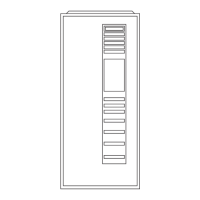SAFETY CONSIDERATIONS
Recognize safety information. This is the safety-alert symbol
.
When you see this symbol on the furnace and in instructions or
manuals, be alert to the potential for personal injury.
Understand the signal words DANGER, WARNING, CAUTION,
and NOTE. These words are used with the safety-alert symbol.
DANGER identifies the most serious hazards which will result in
severe personal injury or death. WARNING signifies hazards
which could result in personal injury or death. CAUTION is used
to identify unsafe practices which would result in minor personal
injury or product and property damage. NOTE is used to highlight
suggestions which will result in enhanced installation, reliability,
or operation.
Installing and servicing heating equipment can be hazardous due to
gas and electrical components. Only trained and qualified
service agency personnel should install, repair, or service
heating equipment. Untrained personnel can perform basic
maintenance functions described in User’s Information
Manual such as cleaning and replacing air filters. All other
operations must be performed by trained and qualified service
agency personnel. When working on heating equipment, observe
precautions in the literature, on tags, and on labels attached to or
shipped with the unit and other safety precautions that may apply.
Follow all safety codes including the National Fuel Gas Code
(NFGC) NFPA 54-2002/ANSI Z223.1-2002 in the U.S.A.; Na-
tional Standard of Canada, Natural Gas and Propane Installation
Code CSA B149.1-00 (NSCNGPIC) in Canada; and the Installa-
tion Standards, Warm Air Heating and Air Conditioning Systems
(NFPA 90B) ANSI/NFPA 90B. Wear safety glasses and work
gloves. Have a fire extinguisher available during start-up and
adjustment procedures and service calls.
Label all wires prior to disconnection when servicing con-
trols. Wiring errors can cause improper and dangerous
operation.
GENERAL
These instructions are written as if the furnace is installed in an
upflow application. An upflow furnace application is where the
blower is located below the combustion and controls section of the
furnace, and conditioned air is discharged upward. Since this
furnace can be installed in any of the 4 positions shown in Fig. 2,
you may need to revise your orientation to component location
accordingly.
ELECTROSTATIC DISCHARGE (ESD) PRECAUTIONS
Electrostatic discharge can affect electronic components.
Take precautions during furnace installation and servicing to
protect the furnace electronic control. Precautions will pre-
vent electrostatic discharges from personnel and hand tools
which are held during the procedure. These precautions will
help to avoid exposing the control to electrostatic discharge
by putting the furnace, the control, and the person at the same
electrostatic potential.
1. Disconnect all power to the furnace. DO NOT TOUCH THE
CONTROL OR ANY WIRE CONNECTED TO THE CON-
TROL PRIOR TO DISCHARGING YOUR BODY’S ELEC-
TROSTATIC CHARGE TO GROUND.
2. Firmly touch a clean, unpainted, metal surface of the furnace
chassis which is close to the control. Tools held in a person’s
hand during grounding will be satisfactorily discharged.
3. After touching the chassis, you may proceed to service the
control or connecting wires as long as you do nothing that
recharges your body with static electricity (for example; DO
NOT move or shuffle your feet, DO NOT touch ungrounded
objects, etc.).
4. If you touch ungrounded objects (recharge your body with
static electricity), firmly touch furnace again before touching
control or wires.
5. Use this procedure for installed and uninstalled (ungrounded)
furnaces.
6. Before removing a new control from its container, discharge
your body’s electrostatic charge to ground to protect the
control from damage. If the control is to be installed in a
furnace, follow items 1 through 5 before bringing the control
or yourself into contact with the furnace. Put all used AND
new controls into containers before touching ungrounded
objects.
7. An ESD service kit (available from commercial sources) may
also be used to prevent ESD damage.
CARE AND MAINTENANCE
For continuing high performance and to minimize possible furnace
failure, it is essential that maintenance be performed annually on
this equipment. Consult your local dealer for proper maintenance
and maintenance contract availability.
REGISTERED QUALITY SYSTEM
C
a
r
r
i
e
r
C
o
r
p
o
r
a
t
i
o
n
R
E
G
I
S
T
E
R
E
D
F
I
R
M
I
S
O
9
0
0
1
#
A
2
8
8
3
®
EFFICIENCY
RATING
CERTIFIED
CERTIFIED
Fig. 2—Multipoise Orientation
A93041
UPFLOW
DOWNFLOW
HORIZONTAL
LEFT
AIRFLOW
AIRFLOW
AIRFLOW
AIRFLOW
HORIZONTAL
RIGHT
2
→

